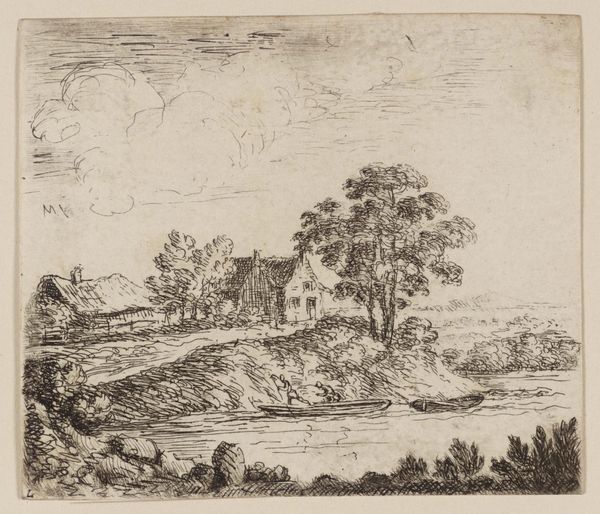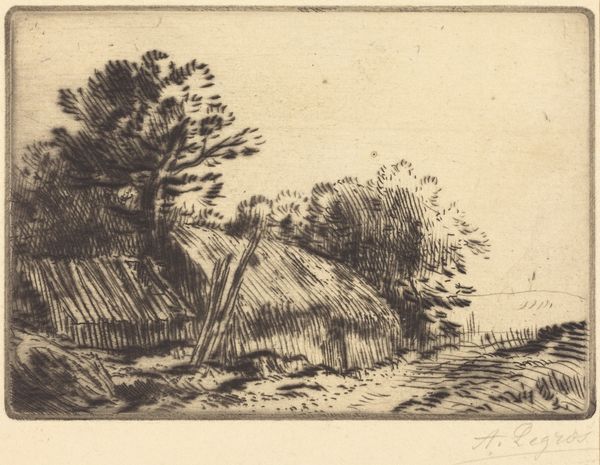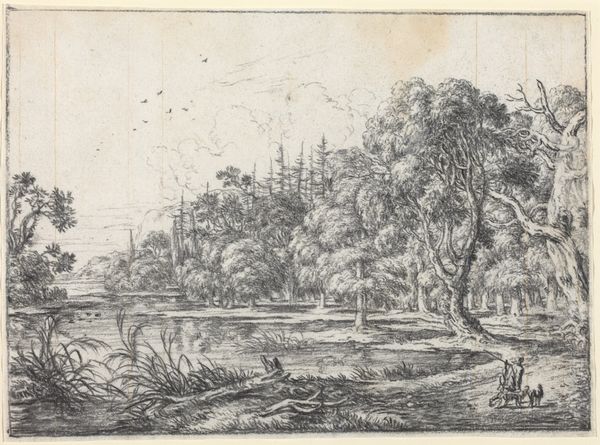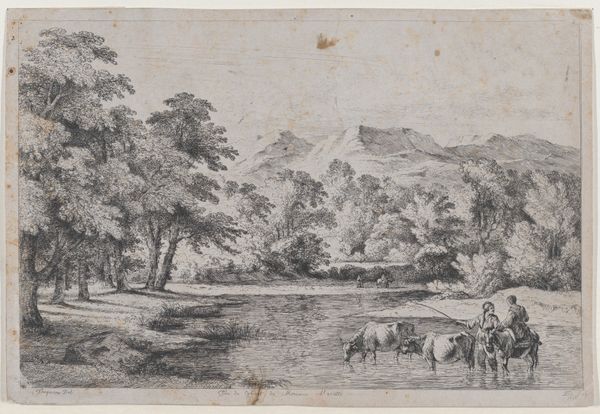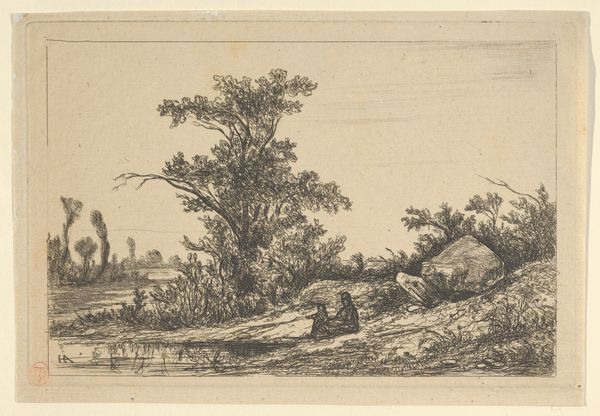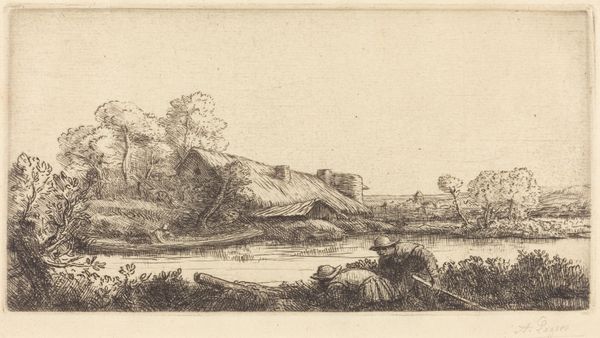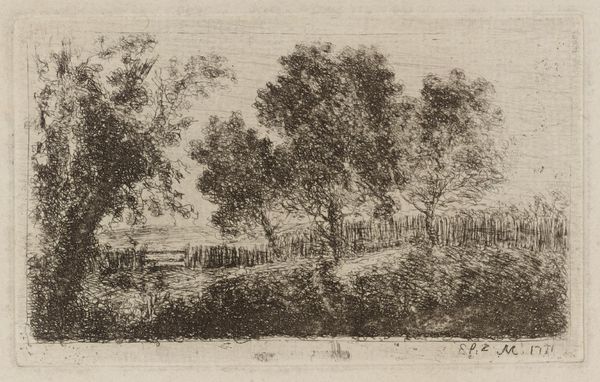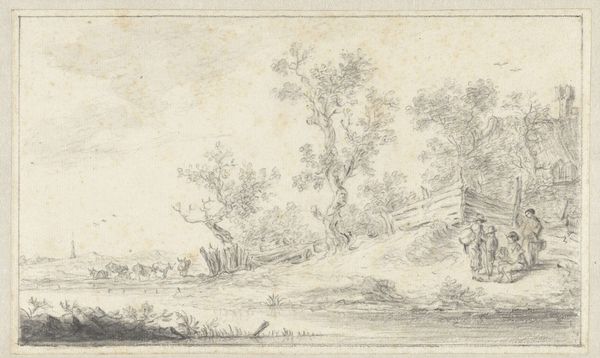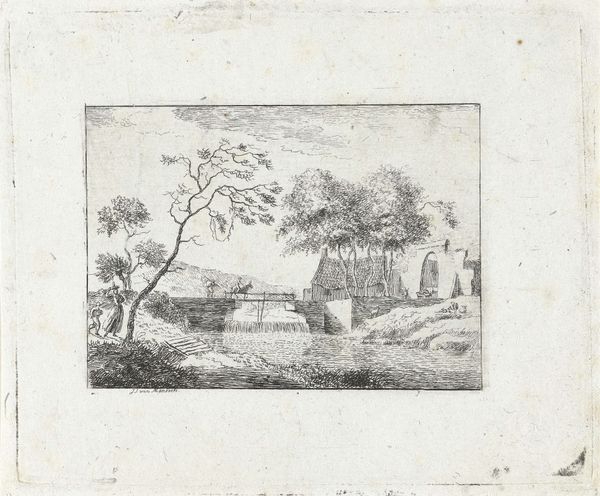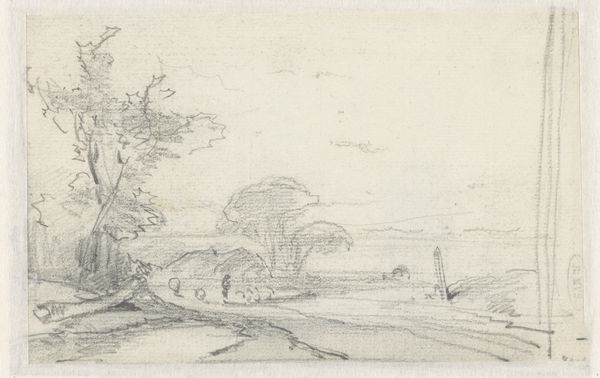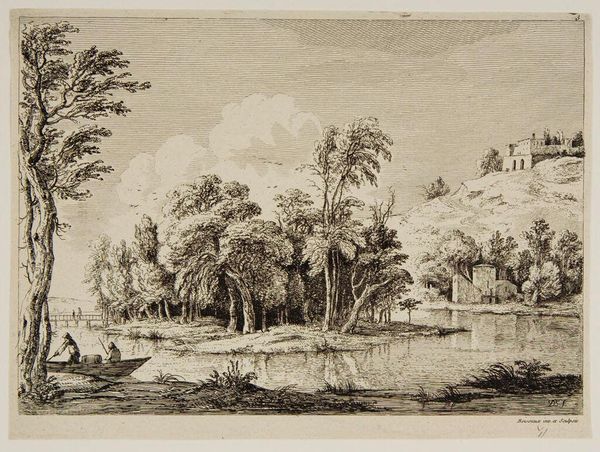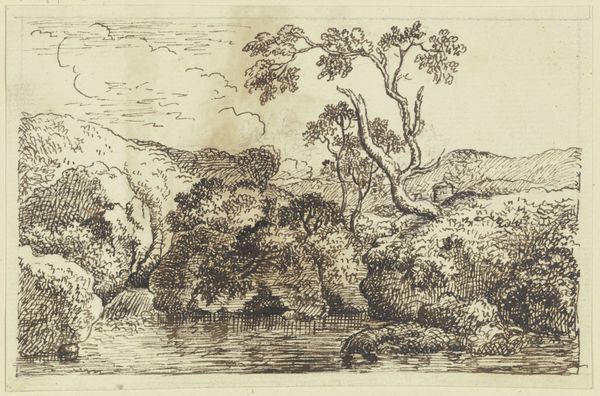
drawing, etching, ink
#
drawing
#
etching
#
landscape
#
ink
#
15_18th-century
Dimensions: height 78 mm, width 206 mm
Copyright: Rijks Museum: Open Domain
Editor: Here we have a wonderfully detailed etching and ink drawing, “Landscape with a Farmhouse along a Road beside a Canal,” dating from the late 1700s. It depicts just what the title suggests, and what strikes me most is the sense of tranquility despite all that detailed line work. How do you interpret this work? Curator: This etching acts as a cultural mirror. Look at how the farmhouse isn’t just a building; it is an archetype representing stability and rural life. Notice the canal. Canals served not just for practical irrigation and transport but symbolize connection and flow. Does the composition evoke a feeling of order or chaos? Editor: Order, definitely. Even the textures feel neat. It's a very contained composition, too. Curator: Exactly. Now, consider what symbols persist even today: home as haven, the path as life's journey. Think of those ideas intersecting here. This artist, even if unintentionally, tapped into those cultural wells. What feelings arise when you compare the scene to our modern landscapes? Editor: It’s simpler, maybe more timeless. It also makes me realize how disconnected we are from these basic symbols today, lost in more complex, manufactured imagery. Curator: Indeed! Our visual world is saturated with ephemeral trends, losing connection to fundamental symbols. This image offers a return to more grounded visual roots. Did it reveal any deeper insights on your end? Editor: Definitely. I see now how landscape art isn’t just about pretty scenes. It can show how we are linked to these enduring cultural symbols, even if we don’t realize it.
Comments
No comments
Be the first to comment and join the conversation on the ultimate creative platform.

